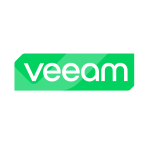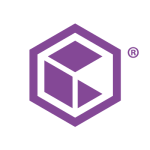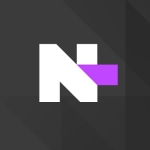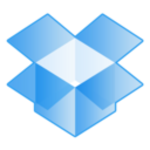What is our primary use case?
I work as a cloud architect in the multicloud team. We have customers that run NetApp services like CVS or CVO on Google or AWS or Microsoft Azure. We help them, support them, and we do migrations from their prime workflows to the cloud.
The primary use case is the migration of workloads from on-prem to cloud. We use the SnapMirror functionality to move to GCP, for example. The second use case is that we also have some file services which we need on the cloud platforms. Our customers use file services like NFS and CIFS or SMB to address their requirements.
How has it helped my organization?
We save money using CVO because there is a data-tiering concept. There are algorithms that make sure that data which is frequently accessed is kept on the faster disks, and data which is less frequently accessed is stored in a cold tier. Deduplication and compression also provide storage efficiency and savings..
What is most valuable?
The feature which I like the most is that it has the capabilities that the traditional storage system offers. It provides all the functionality. The deduplication and compression work exactly like ONTAP's traditional storage. So people who have experience with that find it very easy to manage. And, exactly like the traditional NetApp system, it provides you SnapMirror and the Qtree functionality, which means you have the multi-protocol mechanism. That is something that many of the cloud-native file services do not have.
The capacity is also flexible. You can start from a small disk and you can go with a bigger disk size.
CVO is quite well when it comes to use the file services on a cloud-native platform.
It does have some compliance features. If a person is looking for compliance with GDPR, he can use the compliance feature provided by Cloud Volumes ONTAP. Most companies have some kind of compliance software for example, Data Custodian.A second option would be to go with the compliance feature provided by Cloud Volumes ONTAP. You can implement policies that would restrict the usage of data. NetApp doesn't control the data, the data stays with the company.
What needs improvement?
Currently, Cloud Volumes ONTAP is not a high-availability solution. When you deploy the solution it comes in single-node. It supports a single-node deployment in Google Cloud Platform, but with other cloud providers like Microsoft Azure and Amazon it does offers dual controllers deployment models. However, the RAID protection level isn't quite well designed since it is laid out at the RAID 0 level. So even though you have a dual-controller deployment in place, you do not have high-availability and fault-tolerance in place during a component failure.
NetApp has said it will come out with HA as well, but even if they come out with HA, the way CVO data protection is quite different than a traditional NetApp storage system. Hence, in my opinion It needs to be improvised with RAID protection level on CVO to have better redundancy in place.
In addition to it, when it comes to critical demanding workload or read-write-intensive application, it doesn't provide the expected performance that some of apps/DBs require for example SAP HANA Database. The SAP HANA database has a write-latency of less than 2 milliseconds and the CVO solution does not quite fit there. However, It could be quite well worked with other databases, where the requirements are not so stringent or high demanding for write-latency. I don't know if NetApp has done some PoCs or evaluation with the SAP HANA databases so they are certified to use with.
A last thing, it is an unmanaged solution, it means someone who has no storage background or technical experience for them it's quite challenging to manage the Cloud Volumes ONTAP. They may need a NetApp managed-service model so the NetApp support team can help them to maintain or manage or troubleshoot their environment. When you deploy the solution to a customer environment, you shouldn't expect they will have some storage experience. They might be software or application developers but this product would require them to upgrade their knowledge on the storage track. In my opinion NetApp should consider selling the solution with some add-on services model for example CVO Manage Model support service models to support and manage customer CVO infrastructure.
For how long have I used the solution?
I have been working with Cloud Volumes ONTAP since 2018. We are using two kinds of solutions from NetApp. One is the Cloud Volumes Services managed cloud storage services and second one is Cloud Volumes ONTAP.
What do I think about the stability of the solution?
The stability is only lacking when you have a problem with the underlying subsystem and the hardware has failed. I have not encountered that problem so far.
When doing tests for some of our LOBs, I realized that if your aggregate goes offline then you would have to do a manual failover. That means if you are using CVO for instances, like VMs or, on the on-prem world if you are doing hybrid-cloud connectivity, then you would have to unmount your disks and mount them back. That would be a disruption.
But when it comes to overall product stability, if you don't have any underlying issues, it works fine. But if you have a subsystem level issue, then you will have a problem.
What do I think about the scalability of the solution?
There are capacity limits. It has a maximum of 368 terabytes.
How are customer service and technical support?
I have never used technical support from NetApp. I know people there whom I was working with two years back, and they are my points of contact if I need something. I haven't used technical support because if I have issues I directly contact the people I know. They are usually quite responsive. I have not had any problem with the support so far.
How was the initial setup?
I have done the deployment end-to-end for our customers. The CVO setup is quite simple and straightforward.
You need to have a cloud account, a service account, which CVO can be used with for a cloud provider like Google. You cannot download CVO directly from the marketplace, you need to be on the NetApp website. If you have a service account already created, it will authenticate. You just feed it the information. It's a GUI interface. You just click "next" and it will ask you for the information, like "Which network do you want to deploy?" and "What is the name of your machine?" etc. I don't think anybody needs experience to do the set up.
The challenge comes with configuration, such as if you want to do a multi-protocol or an AD integration. Those things are a little bit deep. A person who has already worked on those kinds of things can easily do them. And other than that, the deployment is quite easy.
The deployment time depends on what you feed to the appliance but it should take about 20 to 45 minutes, everything included, except things such as Active Directory integrations or multi-protocols.
There are many people in our company using CVO but, from an architecture standpoint, I am the one who is helping the LOBs. Some LOBs have some experience because they have been using NetApp. But when it comes to the deployment on the cloud, they are not aware of how the service account works.
What's my experience with pricing, setup cost, and licensing?
If a customer is only using, say, less than 10 terabytes, I don't think CVO would be a good option. A customer using at least 100 or 200 terabytes should get a reasonable price from NetApp.
Because we have been a NetApp customer for a long time I think we do get some discounts when we buy this solution from NetApp on a large scale, although I am not involved with the pricing side.
Which other solutions did I evaluate?
I work with file solutions from other vendors. We have vendors like Elastifile which I used to work with but it was acquired by Google. I also checked a Google-native solution. And Azure has file shares as well as something called NFS Blob, but it also uses the NetApp in the backend. It's a NetApp CVS. It's not like CVO, it's quite different, but it does provide the same functionality, such as file services like CIFS or NFS. But that solution lacks other things. It doesn't work like CVO because CVO provides a lot of features.
CVO provides all the functionality any customer would need on cloud. It's a single solution that covers everything.
What other advice do I have?
It's not a managed solution, so a person who uses this solution should have some prior knowledge using NetApp storage. It is your responsibility to manage the solution.
CVO does provide unified storage, We use CVO's cloud resource performance monitoring. It provides you overall performance stats, such as your disk level, your egress traffic going from the disk, the read/write, random data and sequential data. But for databases, you need specific tools like DB Classify. While CVO does give you information, it doesn't give information at a more granular level. It only provides information from the disk side, such as the IOPS and the throughput you're getting. But there are other things that play a vital role, such as your instance size or type. If your instance-type or size configuration is not properly configured or if it is fighting for resources, you won't get a good performance. In conclusion, it provides a holistic view, but when you want to drill down you need different tools to look at the subsystem level, like the DB or application level.
CVO provides quite good file services that no other cloud provider offers so far, from what I have seen. It has all the mechanisms, such as NFS and SMB and it has multi-protocol. It does provide exactly what a normal storage system provides. The thing it misses is performance/fault tolerance.
Which deployment model are you using for this solution?
Public Cloud
Disclosure: PeerSpot contacted the reviewer to collect the review and to validate authenticity. The reviewer was referred by the vendor, but the review is not subject to editing or approval by the vendor.

















